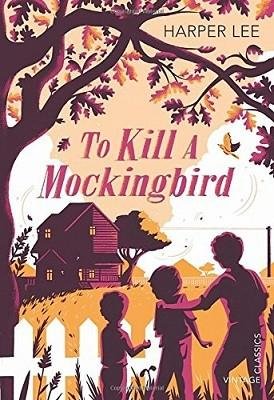To Kill a Mockingbird is a novel that transcends its time and place and speaks to the universal themes of human nature, justice, and morality. The novel explores the complex and contradictory realities of race, class, and gender in the American South during the 1930s. The novel portrays the innocence and wisdom of childhood and the loss and gain of maturity. The novel celebrates the courage and compassion of individuals who stand up for what is right, even when it is unpopular or dangerous. This novel has become one of American literature’s most beloved and influential works.
Jean Louise “Scout” Finch, a young girl who lives in the small Alabama town of Maycomb with her widowed father, Atticus, and her older brother, Jem, serves as the book’s narrator. Scout is a tomboy who loves to read, play, and explore with her brother and their friend, Dill. She is also curious and outspoken, often getting into trouble for her unconventional views and actions. Scout’s world is shaped by the people and events around her, especially by her father’s role as a lawyer who defends a black man accused of raping a white woman.
The novel is divided into two parts. The first part focuses on Scout’s childhood experiences and observations as she learns about the history and culture of her town, the prejudices and stereotypes of its people, and the mysteries and rumors of its secrets. The most intriguing secret is that of Boo Radley, a reclusive neighbor who never leaves his house and who the locals fear and avoid. Boo fascinates Scout, Jem, and Dill, and they try to entice him out or catch a glimpse of him. They also find gifts left for them in a tree’s knothole near his house, suggesting that Boo is not as scary or evil as they think.
The second part focuses on the trial of Tom Robinson, the black man whom Atticus agrees to defend against the false charge of raping Mayella Ewell, the daughter of a poor white farmer. As the biased jury, judge, witnesses, and general public ignore or dismiss Tom’s innocence, the trial reveals the pervasive racism and injustice of society. The trial also tests the integrity and courage of Atticus, who faces hostility and threats from his community for taking Tom’s case. The trial also affects Scout and Jem’s perception and understanding of their father, town, and themselves.
The novel reaches its climax when Tom is convicted despite Atticus’s brilliant defense and later killed while trying to escape from prison. The novel reaches its resolution when Bob Ewell, Mayella’s father and the real culprit of her abuse, tries to take revenge on Atticus by attacking Scout and Jem on their way home from a Halloween pageant. Boo Radley finally emerges from his house and intervenes to save them by killing Ewell during the struggle. Scout finally meets Boo face-to-face and realizes he is a kind and gentle person who has been watching over them all along. She also sees her town from his perspective and understands how he has suffered from the cruelty and ignorance of others.
The novel ends with Atticus tucking Scout in bed after reading her one of Jem’s books. Scout tells him the book is about someone who was chased and caught by people who wanted to hurt him for no reason. She says it would be wrong to hurt someone like that, just like it would be wrong to kill a mockingbird because they don’t do anything but make music for people to enjoy. Atticus agrees with her and says most people are nice when you finally see them.
To Kill a Mockingbird is a novel that artfully and authentically combines humor and tragedy, simplicity and complexity, and realism and symbolism. This novel challenges and enlightens readers and invites them to question and reflect on their values, beliefs, and actions. This novel deserves to be read, reread, and remembered.
To read To Kill a Mockingbird by Harper Lee, you can order it online from Amazon, Barnes & Noble, or Waterstones. You can also learn more about the author’s life and work by watching the film.
Driven by Jefferson Literary. For publishing and submission inquiries, please email submissions@jeffersonliterary.com.
